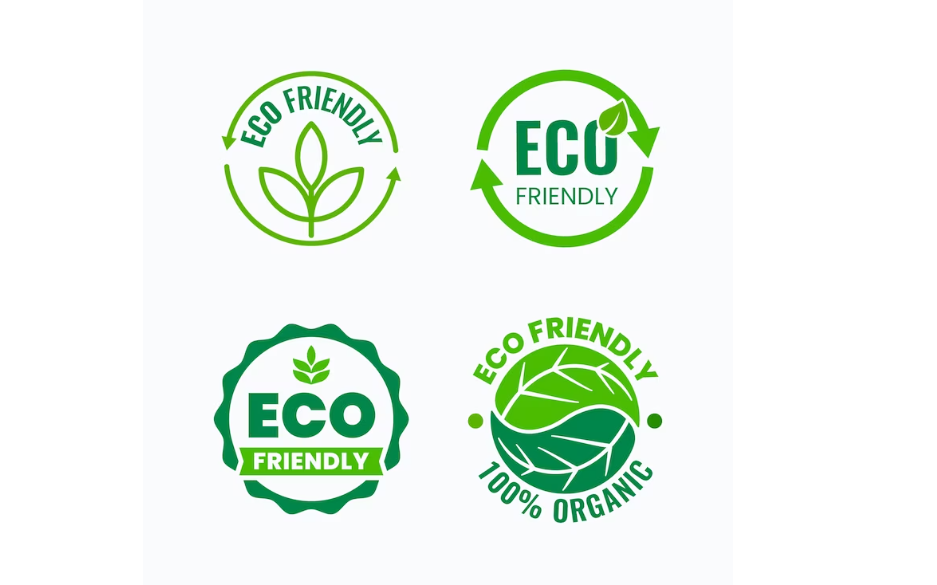
A digital business card is a crucial component of a brand’s identity and one of the first physical elements that customers recognize. Business cards have a lengthy history, dating back to the early 15th century. However, they have changed over the past few years, and everyone is switching from paper to the newest trend: digital business cards.
So, what is a digital business card? This article will cover everything you need to know. It includes creating and distributing digital business cards, the advantages of going digital, how to set up your organization’s reputation with digital cards, and more.
What is a Digital Business Card?
A digital business card is an automated system for exchanging intangible contact details. It is also referred to as a virtual business card, electronic business card, smart business card, or digital visiting card.
A digital business card can be created on an iPhone, iPad, Android device, or PC, and they are frequently less expensive than paper alternatives.

Pic Courtesy: Freepik
Electronic business cards may be created, shared, and personalized like traditional business cards. With digital cards, there are no size restrictions; you can include as much or as little information as you wish.
You may enhance your card with extras like a photo or video, a logo, social network accounts, badges, PDFs, and more in addition to the conventional contact information.
Digital Business Card vs Physical Business Card: Which is Better & Why?
Many people prefer physical business cards to digital business cards, even though many other business elements are moving toward (or have already moved toward) digitalization. They may have different reasons for their choice, but it made us question whether one business card was superior to the other. Or are they comparable even in today’s digital era?

Physical and digital business cards are fantastic when conveying your contact information and leaving a positive impression. So let’s see how they differ-
- You may design a spectacular representation of your personal or professional identity with a physical card. Cards may be made in various design options, sizes, and colors! Everything you can think of can be printed.
- Digital cards, on the other hand, make it simpler to create online networking possibilities. Digital also offers greater room and more extensive profiles, making it simple to include links to your social network accounts.
For companies, each card has benefits and drawbacks of its own. Your branding strategy will determine how you employ them.
Contents of a Digital Business Card
The contents of a digital business card are:
1. What Should a Digital Business Card Include?
Digital cards can include as much or as little information as you choose on your card without ever running out of storage. Here are a few items you must include at all times:
- Name
- Title, department, and company
- Basic contact information
- Location
- Picture, Live Photo, or video
- Logo
- Badges and awards
- PDFs
- Color
- Website
- Social Handles
2. What Mistakes do you Avoid on a Digital Business Card?
Errors are strictly forbidden on digital business cards. For instance, people can only reach you if your phone number is accurate. Even if a networking opportunity is not lost due to a typo in your name or title, it can make you appear unprofessional. The finest digital business cards are succinct, attractive, and growth drivers. Here are some things to avoid while creating your cards:
- If you include a bio on your digital business card, keep it brief. Avoid making it an essay because it might take up a lot of space.
- Make your card fields calls to action rather than labeling them as URLs.
- Make sure that your color scheme increases the memorability of your cards, not the other way around.
- Avoid low-quality photos and videos. Include high-quality, well-taken photographs and videos to achieve the most significant results. Make sure the content of your digital business card is accurate.
How To Make a Digital Business Card?
Designing a digital card is a piece of cake with sophisticated internet services and smartphone apps. Here is a short overview of the top Windows, iOS, and Android apps for this purpose-
1. Online
Haystack—Forever 21, L’Oreal, and Vodafone are a few well-known brands that use this platform. Using Haystack, create individual business cards for each member of your team. Select a template, then fill it out with specifics on each employee. Utilize the built-in data to optimize your promotion plan.
Inigo- Use the Inigo back office to manage your digital designs effectively. You may work with analytics, create designs for various projects, exchange cards with your team, and export data to CRM.
CamCard: With CamCard, you can assign tasks to your team members and manage their access permissions. Additionally, you can use CRM integration to monitor customer communications made by your personnel.
2. Applications
L-Card- Many readymade templates are available, or you may use your own customized backdrop. Create QR codes, add your card to your email signature, and notify your contacts with just one click.
Switch it—It is a simple service with many straightforward features. You can utilize expert layouts, alter the appearance, and include social media connections, images, and videos, among other things.
How do you Edit a Digital Business Card?
Since an editable QR Code, also known as a dynamic QR Code, powers a digital business card, you may update your contact information at the backend without regenerating or sharing your e-business card.
Your digital business cards’ content may be changed without altering the URL or reprinting the QR code. You may make these adjustments on the application or website you used to build one.
To modify your digital business card, adhere to these steps:
- Go to the Dashboard after logging into your account.
- Search for your digital business card in the collection of QR codes.
- In the action column, choose Edit.
- Edit the information on your electronic business card.
- Restore the modifications.
Who Can Use Digital Business Cards?
Digital business cards help people and large companies in many sectors exchange their contact information and build stronger relationships with their clients or target audiences. See some examples of use cases below:
1. Sales personnel

Pic Courtesy: Freepik
Sales representatives, managers, and directors frequently meet with potential clients to market their goods or services. These experts can exchange electronic business cards to remain in touch and/or follow up with clients.
Prospects may quickly record a salesperson’s contact information on their cellphones by scanning a digital business card, enabling them to contact them immediately.
2. Real Estate Brokers

Real estate brokers can exchange their digital business cards with buyers to remain in touch. Realtors may provide potential clients with extra information by connecting these e-cards to their websites. This may include the locations of available homes and offering contact information.
3. Health Practitioners

Digital business cards can be used by medical professionals (staff, physicians) to provide contact information and validate their credentials when necessary.
Additionally, healthcare marketing firms may immediately engage with partners and sponsors by using electronic business cards rather than conventional ones.
4. Employment Seekers

Digital business cards are a modern way for job seekers to stand out when submitting resumes. Job searchers benefit in two ways from including an e-business card on their resume:
- Allows recruiting managers to contact them promptly and
- Enables recruiters with quick access to their digital portfolio.
5. Creators and Artists
Lastly, artists like actors, singers, and photographers may use digital business cards to discover and seize new chances. When an artist meets with a potential customer, they may provide an electronic business card containing all their contact information and links to their most well-known pieces. Anytime someone scans the QR code on the card, they may examine the artwork created by that artist and, if interested, get in touch with the artist for further essential information.
Benefits of a Digital Business Card
Digital business cards provide several networking advantages. They assist you in forming connections that will advance your profession or business.
Let’s explore the significant benefits of digital business cards-

Pic Courtesy: Freepik
1. Provides Contact Information Seamlessly
Share a digital business card with your contact rather than a paper one. Certain digital cards instantly add you to the recipient’s contact book when shared on a smartphone, ensuring your contact always has your information on hand.
2. Increases Your Network
Typically, a business card has the most basic information on it. More information might make your business card seem cluttered and less professional.
With digital business cards, this is not a problem. To share your profiles, use a QR code or URL pointing to your Link on the Bio page. You don’t have to write each link separately on your business card. Your contacts will be able to add your profile to their social channels in this manner.
3. Organize Your Information
Digital business cards may be used for more than just boosting your social media contacts.
These cards allow you to insert any link, so you may utilize that ability to add a variety of data. As long as you can enter the information neatly, there is no restriction on how much you may include on your digital business card.
4. Digital Business Cards are Economical
Many people still value elegantly designed business cards. However, they are expensive to maintain. You pay for your card each time you give it to a contact.
What’s worse, updating your contact information invalidates your current batch of calling cards. On the other hand, if you have a digital business card, you need to make a few minor changes to the information, and you’re good to go.
5. Gives Instant Information Update
Another benefit is that you can rapidly change your information without printing new cards. For example, you may update all contacts from your phone with a copy of your digital business card.
6. Digital Business Cards are Environmentally Friendly

When you transition to digital, you save money and some forests. You minimize printing costs on your business cards and avoid the need to buy paper stock, which is typically made from recently felled trees. Additionally, if you stop printing cards and cease utilizing materials made of plastic, you eliminate plastic waste.
7. Provides More Space for Creativity
With a printed business card, you are constrained in space. You can only design a card with a surface area of 14 square inches, even if it has two sides. Additionally, you may only add text and images to it. However, when making a digital card, your only restriction is your creativity. You may add rich media to your calling card in addition to links and QR codes if you so want.
Frequently Asked Questions
Here are a few frequently asked questions that you may want to read.
1. What Should I Put on My Digital Business Card?
2. How Can I Share Digital Business Cards?
Sharing your digital business cards may be done in one of two ways:
- Share the URL of your digital business card with your contacts.
- Users can scan a printed QR code on a physical business card to quickly access a digital and detailed version of their card.
3. Where Can I Share Digital Business Cards?
Sharing is straightforward and can be done in a variety of ways, which is one of the benefits of having a virtual business card.
- Share With A QR Code: Recipients may obtain their contact information by scanning this QR code with their smartphone. Include a QR Code picture in the video meeting background so attendees can scan it at their convenience.
- Share Via Text or Email: Your digital business card platform will include a share feature. This will let you enter phone numbers and emails directly and have the mobile app send your card on your behalf.
- Include In Your Email Signature: Using the URL or QR code, you may embed your electronic business card in your automatic email signature.
- Post The Link: Remember to post your electronic business card on all of your social media accounts, your landing page, and anywhere else that colleagues in your sector or prospective clients could be online.
The easier it is to obtain your digital business card, the more probable it is that someone will add it to their address book and use it to get a sales lead or new business contact.
4. How Can I Make My Digital Business Card Stand Out From The Rest?
5. What Are the Best Colours and Fonts for Digital Business Cards?
Your card will stand out and be seen if it has a dark backdrop with bold color pops, like red. Always choose legible fonts that convey the tone of your business.
Key Takeaway
The transition to digital business cards is a step towards the idealized future that many people envision. If they aren’t currently as popular as traditional business cards, it won’t be long before they do. Even if you’re not interested in them right now, you never know when you might be.
Given all the benefits, you are due to obtain a digital business card. You may easily develop original designs that represent your brand and individuality. Your inventiveness isn’t constrained by the physical world while using digital cards.
Additionally, you can always select a conference from Eventible’s website that will meet your professional demands when it comes to events. Use your digital business card to introduce your company to great minds, and don’t forget to write a review of the event here.




Comments are closed.